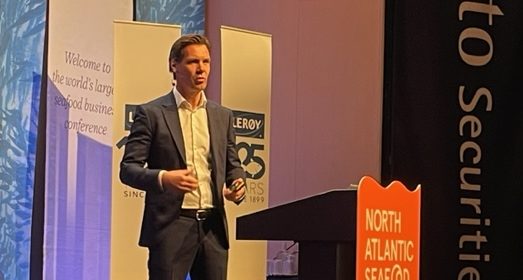Lerøy Seafood Group maintains ambitious outlook amid lower salmon prices and biological challenges.
Norwegian salmon farming giant Lerøy Seafood Group reported an operational EBIT of NOK 412 million ($36.9 million) for the third quarter of 2024, reflecting the impact of reduced salmon and trout prices combined with elevated seawater temperatures, which exacerbated sea lice issues in Northern Norway.
CEO Henning Beltestad remarked that these challenges “moderated growth in certain parts of our operations” and slightly revised the company’s 2024 harvest projection from 193,500 to 190,000 GWT, with 20,000 GWT of this from Scottish Seafarms.
The Farming segment achieved an operational EBIT of NOK 310 million ($27.8 million), with Beltestad highlighting the performance at Scottish Seafarms, which experienced “substantial year-over-year profit growth,” emphasizing the group’s overall strong biological progress.
Looking forward, Lerøy anticipates further advancements in fish welfare through expanded use of submerged cages, which have reduced sea lice treatments by 90%. The company will allocate an additional NOK 350 million ($31 million) to increase submerged cage installations, aiming to protect up to 45% of its salmon stock by mid-2025.
In the Value-Added Processing and Sales & Distribution (VAP S&D) segment, Lerøy saw strong gains with a quarterly EBIT of NOK 220 million ($19.7 million), bringing the rolling 12-month figure to NOK 884 million ($79.3 million).
“VAP S&D continues its positive trajectory, achieving another all-time high on a 12-month rolling basis,” noted Beltestad, attributing this to operational improvements and the benefits of an integrated value chain.
Lerøy remains committed to reaching a 200,000 GWT target for its Norwegian operations by 2025, projecting a total harvest of approximately 211,000 GWT across all regions, including Scottish Seafarms.
Beltestad concluded that the group’s emphasis on quality roe and smolt production, alongside advanced farming technologies and process optimizations, will drive long-term success and address the growing demand for sustainable, integrated supply chains in Europe.









